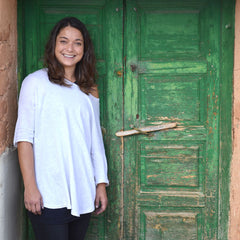First published in the Olive Press - July 2021
According to a survey conducted by Spain’s Women Winelovers Association (AMAVI), 87% of women let a male companion choose the wine in a restaurant. Which is interesting. Because if men are still taking the lead in choosing the wine, in Spain women are increasingly taking the lead in producing it.
Women aren’t newcomers to the Spanish wine world. Mar Raventós only recently handed over the reins at the Raventós Codorníu group after 20 years of successful leadership. Rocío Osborne at Grupo Osborne, and Marina García at González Byass are both well-established figures on the marketing and communications side.
There’s the consumer side too. As President of the above mentioned AMAVI, Sonia Prince de Galimberti is leading a charge to focus more on the needs and wants of female wine consumers. And in 2018, Almudena Alberca became only the fourth Spaniard, and the first Spanish woman to be awarded the prestigious Master of Wine, or MW qualification (there are only 416 MWs worldwide).
But for all that, winemaking is still often thought of as a male-dominated world. So, we thought we’d throw a spotlight on three women whose love of wine has driven them out into the vineyard and led them to produce some of the more interesting, exciting and downright drinkable wines on the market today.
Ana Carazo – La Loba, DO Ribera del Duero

Winegrower, winemaker, cellar manager Ana Carazo is the driving force behind La Loba. Her family have been growing vines and making wine in Matanza de Soria in the far eastern edge of Ribera del Duero for decades, and hours in the fields watching and learning as she was growing up left its mark.
While friends at her convent school were wondering where next, Ana headed off to Requena near Valencia to study viticulture. Back in Matanza she set to work tending the family´s centenarian, pre-phylloxera Tinta del Pais (tempranillo) bush vines. Fighting the famously cold Sorian winter she coaxes optimum intensity from her grapes to produce the quite excellent La Loba. We're only five vintages in, but the results are already excellent.
Charlotte Allen – Almaroja, DO Arribes

"Spain's wild west captured and put in a bottle." That's how one critic has described the wines produced by Charlotte Allen in the remote village of Fermoselle. "Charlie", as her friends call her, began her career with a long stint working for a UK wine importer.
But after doing harvests in France, Italy and South Africa, she decided she wanted to make her own product, and set off to study viticulture. A few years later she was searching for a spot to put down roots and, on the advice of wine-making friends, ended up in the Arribes region in North-West Spain.
It's certainly off the beaten track - "A Year in Provence meets The Good, the Bad and the Ugly" according to Charlie. But wine has been part of the local fabric here since the Middle Ages, and Arribes – one of Spain’s newest Denominaciónes de Origen - is a hidden gem. The emphasis here is very much on working with native local grape varieties like Juan Garcia, Rufete, Brunal, Malvasia or Puesta en Cruz. Using largely manual processes, Charlie creates unique wines bursting with character.
Julia Casado – La del Terreno, DO Bullas

Julia Casado doesn’t come from a wine-making family and her route into the wine world was far from conventional. She initially studied agricultural engineering in Germany (alongside the cello), where she completed her thesis on German wine-making techniques. Seduced by the practical aspects of her studies, Julia soon fell in love with winemaking and decided to switch focus and studying enology. After several stints overseas, working and studying in Uruguay, Argentina and Cuba, she came back to Spain in 2013 and settled in Murcia. There her current project – La del Terreno - came to life.
Julia works mainly with the Monastrell grape (known by the locals as la del terreno, or the one from the earth) and follows traditional, minimal intervention winemaking methods which have been used for centuries. This fits her sustainable philosophy and respect for the environment, and lets the natural personality of the Monastrell grape shine through.
Julia began in DO Jumilla, but is now more centred on DO Bullas, a more mountainous region in central Murcia, where the cool air gives the Monastrell grape an even lighter, more floral expression. Julia is only a few years into her project, but if the initial results are anything to go by, we’ll be hearing much more about her in the future.

